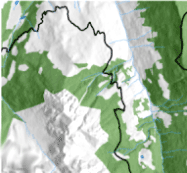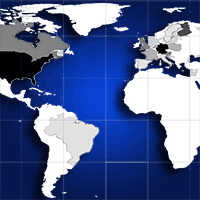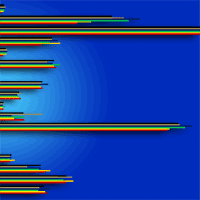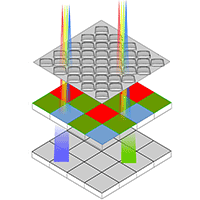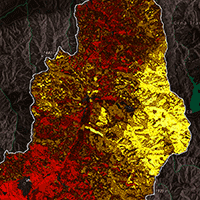
Land use inventory as framework for environmental accounting: an application in Italy
P Corona (1), A Barbati (1), A Tomao (1), R Bertani (2), R Valentini (1), M Marchetti (3), L Fattorini (4), L Perugini (1)
iForest - Biogeosciences and Forestry, Volume 5, Issue 4, Pages 204-209 (2012)
doi: https://doi.org/10.3832/ifor0625-005
Published: Aug 12, 2012 - Copyright © 2012 SISEF
Research Articles
Abstract
Land use inventories are sound measures to provide information on the area occupied by different land use or land cover types and their changes, although less widespread than traditional mapping; as such, they are distinctively well-established tools for generating statistics on the state and the dynamics of land use in the European Union. Italy has recently set up a land use inventory system (IUTI) as a key instrument for accounting removals and emissions of greenhouse gases (GHG) associated to land use, land use change and forestry (LULUCF) activities elected by Italy under the Kyoto Protocol. IUTI adopts a statistical sampling procedure to estimate the area covered by LULUCF land use categories in Italy, and associated uncertainty estimates. Estimates of land use have been so far processed for the period 1990-2008 and highlight three interlinked land use change patterns in Italy: (i) increase in forest land for a total uptake of 1.7% of the Italian territory; forest cover estimates, with a standard error of 0.1%, indicate an annual increase of forestland higher over the period 1990-2000 (32 901 ha year-1) than in 2000-2008 (22 857 ha year-1); surprisingly, also a significant deforestation rate is observed (-7000 ha year-1), due to forest land conversion mainly into artificial areas; (ii) consumption of arable land (-4.2% of the Italian territory) primarily due to land uptake by urban areas and to conversions to permanent crops (mainly orchards and vineyards); (iii) urban sprawl uptakes 1.6% of the Italian territory in this period, with a total coverage of settlements reaching 7.1% of total land surface in Italy in 2008. Overall, land use dynamic results in land uptake by forest land is of the same magnitude of land uptake by urban areas, but the effects of these processes on GHG removals (by forest sinks) and emissions (by urban areas) is expected to be significantly different. In a broader perspective, IUTI methodology, by providing reliable estimates and well-defined levels of statistical uncertainty for assessing stocks and flows of land use at national level, can be further implemented to frame other key questions for sustainable development policies, like the set up of environmental-economic accounting systems.
Keywords
Land Use Survey, Land Use Change, Statistical Sampling, Forest, Environmental Accounting
Authors’ Info
Authors’ address
A Barbati
A Tomao
R Valentini
L Perugini
Dipartimento per l’Innovazione nei sistemi Biologici, Agroalimentari e Forestali (DIBAF), Università della Tuscia, v. San Camillo de Lellis, s.n.c. , I-01100 Viterbo (Italy)
R.D.M. Progetti S.R.L. v. Maragliano 31/A, I-50144 Firenze (Italy)
Dipartimento di Scienze e Tecnologie per l’Ambiente e il Territorio (DISTAT), Università del Molise, C.da Fonte Lappone, I-86090 Pesche, IS (Italy)
Dipartimento di Economia Politica e Statistica, Università di Siena, p.za S. Francesco 8, I-53100 Siena (Italy)
Corresponding author
Paper Info
Citation
Corona P, Barbati A, Tomao A, Bertani R, Valentini R, Marchetti M, Fattorini L, Perugini L (2012). Land use inventory as framework for environmental accounting: an application in Italy. iForest 5: 204-209. - doi: 10.3832/ifor0625-005
Academic Editor
Renzo Motta
Paper history
Received: Mar 30, 2012
Accepted: Jul 01, 2012
First online: Aug 12, 2012
Publication Date: Aug 29, 2012
Publication Time: 1.40 months
Copyright Information
© SISEF - The Italian Society of Silviculture and Forest Ecology 2012
Open Access
This article is distributed under the terms of the Creative Commons Attribution-Non Commercial 4.0 International (https://creativecommons.org/licenses/by-nc/4.0/), which permits unrestricted use, distribution, and reproduction in any medium, provided you give appropriate credit to the original author(s) and the source, provide a link to the Creative Commons license, and indicate if changes were made.
Web Metrics
Breakdown by View Type
Article Usage
Total Article Views: 59895
(from publication date up to now)
Breakdown by View Type
HTML Page Views: 48813
Abstract Page Views: 4516
PDF Downloads: 4997
Citation/Reference Downloads: 62
XML Downloads: 1507
Web Metrics
Days since publication: 4887
Overall contacts: 59895
Avg. contacts per week: 85.79
Citation Metrics
Article Citations
Article citations are based on data periodically collected from the Clarivate Web of Science web site
(last update: Mar 2025)
Total number of cites (since 2012): 41
Average cites per year: 2.93
Publication Metrics
by Dimensions ©
Articles citing this article
List of the papers citing this article based on CrossRef Cited-by.
References
Urban sprawl in Europe. The ignored challenge. EEA Technical Report No. 10/2006, Copenhagen, Denmark.
Gscholar
Land accounts for Europe 1990-2000. Towards an integrated land and ecosystem accounting. EEA Technical Report No. 11/2016, Copenhagen, Denmark.
Gscholar
Landscape fragmentation in Europe. EEA Technical Report No. 2/2011, Copenhagen, Denmark.
Gscholar
An experimental framework for ecosystem capital accounting in Europe. EEA Technical Report No. 13/2011, Copenhagen, Denmark.
Gscholar
Global Forest Resources Assessment 2000. Main report. FAO Forestry Paper, Rome, Italy.
Gscholar
Good practice guidance for land use, land use change and forestry. Chapter 3: Annex 3A.1 biomass default tables for section 3.2 forest land good practice guidance for land use, land-use change and forestry. The Institute for Global Enviromental Strategies for the IPCC and the Intergovernmental Panel on Climate Change, Hayama, Kanagawa, Japan, pp. 21.
Gscholar
Italian greenhouse gas inventory 1990-2009. National inventory report. ISPRA, Rome, Italy.
Gscholar
Report of the review of the initial report of Italy. FCCC/IRR/2007/ITA 10 December 2007. UNFCCC, Bonn, Germany.
Gscholar

